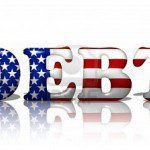As the push for a $15 per hour minimum wage continues in earnest across America, policymakers had better consider the warning signs flashing from beleaguered Puerto Rico. Minimum wage policy was a major factor leading to the current crisis there.
had better consider the warning signs flashing from beleaguered Puerto Rico. Minimum wage policy was a major factor leading to the current crisis there.
The Government Development Bank (GDB) in the U.S. territory is operating under a state of emergency imposed to halt the erosion of its dwindling cash. Governor Alejandro Garcia Padilla declared the emergency earlier this month. The executive order suspends the bank’s lending power and freezes most withdrawals, except for those to fund public safety, health, and education services.
The GDB serves as the U.S. territory’s primary financial agent. According to Bloomberg, the bank has $562 million in liquidity. It is currently negotiating with creditors, trying to avoid default on $422 million payment due May 1. According to a report at Fortune.com, Garcia Padilla says the bank can’t afford to repay the loan… Meanwhile, the bank has filed with regulators to sell more debt, according to a Bloomberg report…
…What does any of this have to do with the minimum wage? Well, there is growing evidence that Puerto Rico’s high minimum wage relative to its natural wage scale was a key factor in dragging down the island’s economy and spiraling it into the current debt crisis. The island was required to bring its minimum wage in line with the U.S. back in the 70s and 80s. While increasing the minimum always impacts employment, its effects are often hidden from sight. But it was particularly disruptive in Puerto Rico, and obviously so, due to the fact that the wage scale there was significantly lower than on the mainland.
A recent report by the Foundation for Economic Freedom highlights a National Bureau of Economic Research study that demonstrates the negative impact of the minimum wage on Puerto Rico’s economy…
The study identified four key impacts of the minimum wage in Puerto Rico.
- The U.S.-level minimum altered the distribution of earnings to an extraordinary extent, creating marked spikes that dominate the earnings distribution.
- Imposing the U.S.-level minimum decreased employment 8% to 10% compared to the level that would have prevailed had the minimum been the same proportion of average wages as in the U.S.. It greatly reduced jobs in low-wage sectors.
- Migrants from Puerto Rico to the U.S. are drawn largely from persons jobless on the island, with characteristics that make them liable to have been dis-employed by the minimum wage.
- Migration to the U.S. was critical in allowing Puerto Rico to institute the minimum wage and played a major role in the long-term growth in real earnings by reducing the labor supply and raising the average qualifications of worker’s on the island.
Minimum wage opponents argue that it primarily hurts the very low-income workers it is meant to help. Puerto Rico’s experience seems to bear this out. On top of that, it ultimately leads to a stagnating economy, as the FEE report asserts:”…For a nation struggling to service its debt, discouraging economic activity or driving it underground is not a good idea. Puerto Rico’s woes as a result of the minimum wage should be a warning for the mainland.”
Disclosure: The original article, by Samuel Bryan (SchiffGold.com), was edited ([ ]) and abridged (…) by the editorial team at  munKNEE.com (Your Key to Making Money!)
munKNEE.com (Your Key to Making Money!)  to provide a fast and easy read.
to provide a fast and easy read.
“Follow the munKNEE” on Facebook, on Twitter or via our FREE bi-weekly Market Intelligence Report newsletter (see sample here , sign up in top right hand corner)
Links to More Sites With Great Financial Commentary & Analyses:
ChartRamblings; WolfStreet; MishTalk; SgtReport; FinancialArticleSummariesToday; FollowTheMunKNEE; ZeroHedge; Alt-Market; BulletsBeansAndBullion; LawrieOnGold; PermaBearDoomster; ZenTrader; EconMatters; CreditWriteDowns;
 munKNEE.com Your Key to Making Money
munKNEE.com Your Key to Making Money
